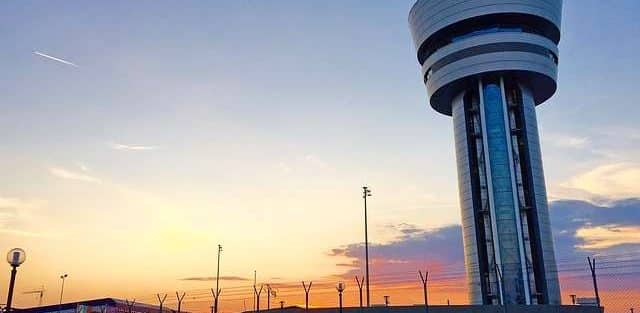Air Traffic Control

Air traffic control is a service for pilots that promotes the safe, orderly and expeditious flow of air traffic. In the United States, Air Traffic Control is operated by the Federal Aviation Authority (FAA). Some of the key responsibilities of air traffic control are to:
- Prevent aircraft collisions
- Provide information and support to pilots
- Coordinate incoming and departing flights at airports
Operating from ground-based terminals, air traffic controllers maintain contact with pilots in their controlled airspace through radio communication. This includes jet charters on the ground preparing for takeoff, as well as charter flights in progress. When a jet charter flight is flying within controlled airspace, air traffic control can issue basic instructions, such as:
- Increase or decrease altitude
- Turn left or right
- Speed up or slow down
This is typically done to help pilots adhere to their flight plans, deal with unexpected weather changes, and to maintain safe separation levels from other aircraft. Air traffic controllers use air traffic separation rules to prevent collisions. In essence, these rules ensure air charter flights maintain a minimum amount of space in every direction at all times. Even if a private jet charter is flying in uncontrolled airspace, air traffic control can issue advisories that will assist in the pilot in making informed decisions.
Air traffic control is a service for pilots that promotes the safe, orderly and expeditious flow of air traffic. In the United States, Air Traffic Control is operated by the Federal Aviation Authority (FAA). Some of the key responsibilities of air traffic control are to:
- Prevent aircraft collisions
- Provide information and support to pilots
- Coordinate incoming and departing flights at airports
Operating from ground-based terminals, air traffic controllers maintain contact with pilots in their controlled airspace through radio communication. This includes jet charters on the ground preparing for takeoff, as well as charter flights in progress. When a jet charter flight is flying within controlled airspace, air traffic control can issue basic instructions, such as:
- Increase or decrease altitude
- Turn left or right
- Speed up or slow down
This is typically done to help pilots adhere to their flight plans, deal with unexpected weather changes, and to maintain safe separation levels from other aircraft. Air traffic controllers use air traffic separation rules to prevent collisions. In essence, these rules ensure air charter flights maintain a minimum amount of space in every direction at all times. Even if a private jet charter is flying in uncontrolled airspace, air traffic control can issue advisories that will assist in the pilot in making informed decisions.








